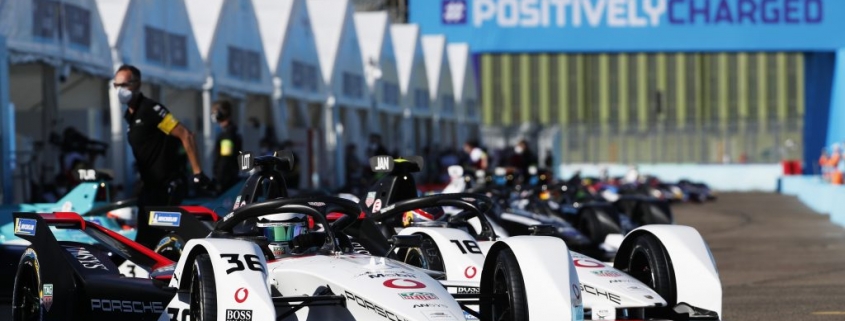Formula E: How Race Car Technology May End up in Consumer EVs
Formula E, the electric counterpart to Formula 1, sees some of the most sophisticated advancements in EV technology. As teams compete in this brand new motorsport, they face brand new challenges. But the solutions to these sophisticated problems aren’t just good on the track. Consumer electric cars can benefit from the competitive nature of Formula E, which encourages rapid advancements in sustainable technology.
How Formula E has evolved through the years
The first Formula E race took place in 2014, with the Gen1 line of cars ready to go, but they weren’t perfect. The 28kWh battery meant that each team needed two cars, swapping into the second one mid-race. And the cars only made 200 hp apiece and needed three seconds to get from 0-60. For the time, that was wicked fast, but even base model Teslas beat out the original race cars. However, as the years have passed, Formula E cars have only become faster.
The second season saw a 30 horsepower boost (total of 230 hp) while still using the same 28kWh battery, and season three saw advances in regenerative braking. Now, the batteries could regain up to 150kw of energy, the equivalent of 200 horsepower, throughout the race.
Season 5 marked the beginning of the Gen2 Formula E racers. The battery’s capacity, despite a similar size and weight, increased from 28kWh to 54kWh. The range doubled, which allowed each team to enter just one car, and eliminated the need for mid-race stops. On top of that, the horsepower increased from 241 to 335. A monumental power surge that bumped the top speed up to 174mph (originally 140mph) and shaved .2 seconds off their 0-60 times (2.8 seconds).
The most recent changes were made in 2019, where dual-engined layouts were outlawed in order to lower the car’s costs and complexity. Yet despite one less engine, the season six cars still managed 315 horsepower.
Tomorrow’s Gen3 Formula E cars will be better than ever

Formula E will be introducing new rules and regulations for the next Gen3 race cars, which pinpoints consumer car issues. Announced on the 2020 World EV Day (October 9th), the cars will be judged on both how they’re built and how reliable they are.
Each team must develop sustainable building techniques and materials, as well as a battery recycling process. Every moment from when the car is put together to when it’s taken apart will but scrutinized rather than just the powertrain and its emissions. And a mandatory Life Cycle Assessment, a detailed guide to how the raw materials are extracted, put together, and disposed of down the line, will highlight that process.
And speaking of the powertrain, the cars will also need to assess the lifespan of their parts. Of all the problems to solve, this one focuses on consumer cars the most. Creating reliable race cars and reusable parts can benefit future budget EVs as the years go on.
Speeding towards a sustainable future

| Xavier Bonilla/NurPhoto via Getty Images
There’s no denying that motorsports are an excellent testing ground for new technologies. Some of the simplest solutions, such as rearview mirrors, first debuted on the track. But with Formula E, the competitiveness of teams to create better and more efficient technologies plays hand in hand with the electric cars of tomorrow.
Nissan, BMW, Mercedes, Audi, they all race in the Formula E series. But they’re also electrifying their line and improving their models with each generation. The battery capacity of the Nissan Leaf is nearly triple that of what it was in 2015. Mercedes claims the 2021 EQS will have a 435-mile range and only a 31 minute charge time (using a DC fast charger).
In essence, the problems rapidly addressed by Formula E teams translate into the cars they build. And as the motorsport continues to progress, the benefits that trickle down into consumer electric cars will only get better and better.
RELATED: F1 Cars are Much Heavier Than You Think
The post Formula E: How Race Car Technology May End up in Consumer EVs appeared first on MotorBiscuit.







